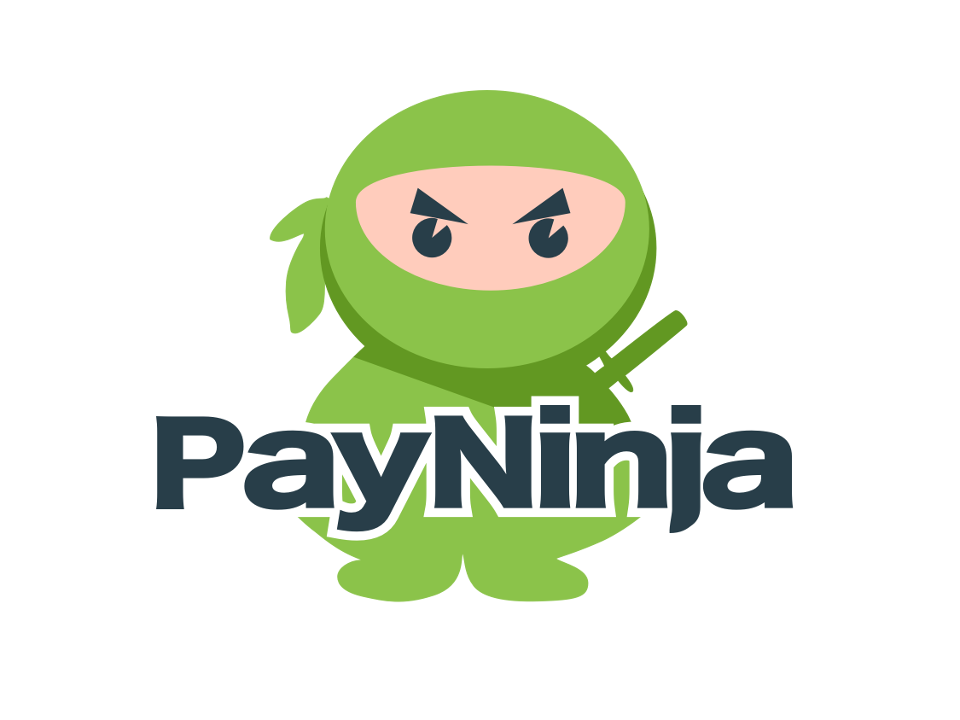Tired of Upwork? Find 45 Alternatives to Maximize your Freelancing Profits
The way we work is changing. Gone are the days of the traditional 9-to-5. We’re entering a new era of work that is project-based, independent, exciting, potentially risky, and rich in opportunity. It is estimated that by 2020, 50% of the US workforce (60 million people) will be freelancing – and that’s just 1 country.
Freelancing allows you to become a digital nomad and work independently from anywhere in the world, with as little as a computer and the Internet. However, relying on marketplaces like Upwork and Freelancer.com is often not enough.
Why you Should Leave Upwork and Freelancer.com
Let’s be blunt: these platforms very rarely operate in your favour, and require you to play by their rules.
Fees are just one of the many restrictions these platforms impose on users. Others include limited messaging options and reduced job success scores in case of disputes. This means time, money, and headaches!
I’m sure you know how easy it can be to accept these fees as necessary, but you might be surprised when you add them all up (together with tax and PayPal fees). Only then will you realize how much of your well-deserved, hard-earned money goes to Upwork in exchange for their nominal “benefits.”
The truth is, Upwork keeps A LOT of your earnings.
Here are some figures we’ve pulled from our own work history to show you what we’re talking about. In a 5-year period, we managed to close 104 contracts on Upwork. 78 of those were jobs for under $500, with an average of $421. 26 exceeded $500, with an an average of $3,200.
That left us with $116,038 in revenue after 5 years, which – with our margins – meant about $45,000 in profit.
Upwork took $14,872 of that.
Painful, isn’t it?
And we’re not the only ones who are fed up with their service. According to a private study:
79% of users intend to leave Upwork within 6 months, of which 51% are planning to leave within 2 months.
If you are seeking a safe freelancing haven wherein to build your network of contacts, you first need to understand the magnitude of changes to Upwork, and why working there is akin to banging your head against a wall. Repeatedly. This doesn’t mean that the service is 100% useless. It’s a great tool for finding new clients. But if you really want to get close to your clients, it’s better to get them on Skype and have them pay via an alternative escrow service like PayNinja (more on this at the end of the article).
Here’s an overview of the site’s current pricing model and possible drawbacks (you can compare them to its main competitor: Freelancer.com).
The Bad about Upwork
If you’re an active freelancer, you must have caught wind of the recent and massive uproar concerning Upwork.
Yes, it’s that big.
-
Pay to win:
Here’s how pricey Upwork is:
-
- You pay 20% of your first $500 billed across all contracts
- You pay 10% of your total billings between $500.01 and $10,000
- You pay 5% of your total billings beyond $10,000
-
In practice, very few contracts reach or go beyond $10,000.
The platform has one of the highest income tax rates for low-wage workers in the world.
The pricing model is a massive headache for freelancers who take on numerous low-income jobs to pay their bills. In the end, few users will earn a reasonable income once Upwork takes its cut. A very successful American freelancer pointed out that all her contracts were lower than $500 (i.e. small, one-off jobs), forcing her to increase her prices by 10% to avoid a decrease in earnings.
-
Loss of job opportunities:
Pre-merge Elance had around 78,000 jobs listed, while Odesk had around 48,000. As of November 2017, Upwork has approximately 89,327, which is 1/3rd of the jobs being lost from the former platforms – almost as much as Odesk originally started with.
-
Quantity over quality:
The majority of jobs displayed on these sites have been expired for weeks, months, or even a whole year. They are relatively well hidden, as Upwork won’t let you browse past the first 5,000 results.
-
Drop in reputation and lack of offers:
Freelancers migrating from Elance to Upwork were penalized by an instant drop in reputation. For instance, this meant that a freelancer with a score of 100% on Elance could end up with a score of 70% on Upwork due to having multiple projects completed with no feedback given. For some very highly qualified freelancers, this could lead to months of vying for work with little or no success.
-
Go big or go home:
Upwork wants to move itself and its freelancers in a more corporate direction. One of the ways they’ve done this is by introducing the “Pro” program, whereby some of the best freelancing talents are invited into an elite circle by Upwork’s Enterprise clients, many of which are Fortune 1000 companies. While this might sound nice in theory, many highly qualified freelancers have permanently abandoned the corporate lifestyle because it just doesn’t agree with them. Many are OK with earning less, as long as the work is fun and they feel like they are helping smaller businesses grow.
What Upwork may have forgotten is that the better you are as a freelancer, the more freedom you have to choose where you work, and who you work with.
-
Picky search engines:
Upwork’s internal search algorithm tends to ignore the bottom 10% of profiles. This means that some profiles will never pop-up, and it limits the number of available jobs and freelancers for hire.
-
Random bans and problems with profiles:
Some well-rated users have reported that Upwork banned their accounts out of nowhere. The platform’s internal algorithm seems to evaluate profiles based on their number of closed job postings, which means that leaving jobs open for more than 30 days is asking for trouble. One India-based freelancer with outstanding reviews who had made over 100,000 USD on the platform was suddenly banned without explanation or opportunity for appeal.
Other freelancers struggle just to get their profiles accepted, only to be turned down because the “marketplace doesn’t have opportunities for [their] area of expertise.”
The Drawbacks of Freelancer.com
Started by an Australian Entrepreneur, Freelancer.com has accumulated 23.5 million registered users and over 11 million job postings. Pretty impressive, to say the least. But just like its biggest competitor – Upwork – Freelancer.com is far from perfect.
-
Competition too high.
The sheer popularity of the platform makes it difficult to get decent-paying jobs…unless you have a good reputation on the site. To do this, users must first serve several lousy-paying contracts. It’s a vicious circle that requires you to spend dozens of hours working for next to nothing. Although this is a common problem with many freelancing services, it’s more than apparent on Freelancer.com.
-
Inaccurate job budgets.
Let’s say someone advertises a web design job and posts it for $800. You won the bid, but the client hasn’t contacted you yet (not even about project details or deadlines, which should be a no-brainer). You accept, only to find out that the budget for the project is within the 10% margin of what they advertised in the first place: a whopping sum of 80$. The worst thing is, you’ve already accepted. Freelancer.com will take its cut from you; and because the project was officially labeled as going for 800$, you’re gonna feel the difference. (Freelancers are charged for 10% or $5 for fixed projects.)
-
Dishonest clients and scam accounts.
If you hop on sitejabber.com and browse through some of the client reviews concerning Freelancer.com, you’ll stumble upon….interesting results. Out of 2,736 reviews, 1,155 awarded the platform only 1 out of 5 stars. Negative reviews tend to focus on the relatively large amount of scammers who refuse to pay bidders and disappear without a trace. Not to mention poor help from the support staff. Some people also report problems with registering bids and accepting projects.
Where you Should Go Instead: 45 Alternatives Worth Trying
Luckily, the online marketplace is not all doom and gloom. If you haven’t done it already, it might be a smart move to wean yourself off of Upwork and Freelancer.com, and consider diversifying your sources of income. The reasoning behind it is pretty simple: the best way to ensure a reliable flow of funds is to build networks with people who have a budget, and value what you do.
Ask any successful freelancer how they advertise themselves, and you’ll learn that half the battle is just simple, word-of-mouth marketing. One way to do this is to be active on Facebook groups, LinkedIn, AngelList, and if you are a developer – GitHub.
Here are some screen shots from 3 different FB groups to show how common this is…



But if you still rely on marketplaces, here is a list of alternatives worth checking out:
General Freelancing Platforms
- Cloudpeeps: A marketplace with carefully identified projects for freelancers to bid on. Not a lot of projects on the platform, but worth keeping an eye on.
Commissions charged: 15%, but this can be reduced by subscribing to the site; various membership packages for up to $99 a month.
- Coworks. This is a marketplace that allows freelancers to showcase their portfolios. But unlike LinkedIn, where they attract generic recruitment propositions, they’re matched up with opportunities that fit their distinct abilities and preferences.
Commissions charged: 12%
- Fiverr. A massive marketplace with pre-priced packages for services ranging from app development to content marketing. The platform offers a lively and informative forum for freelancers, and tips from the Fiverr Academy on how to become a successful seller.
Commissions charged: 20%
- Ilovecreatives. A small, but dedicated freelance platform with an impressive range of disciplines (filmmakers, stylists, accountants, you name it). They claim to have a 100% acceptance rate for all their applicants, but all freelancers must complete an extensive application form to get approved.
Commissions charged: $40 application fee on signing up.
- Jobrack. Eastern Europe has a reputation for its highly skilled developers, and Jobrack is a great place to find them.
Commissions charged: No additional fees.
- Jobspresso. A marketplace platform based on remote cooperation that offers jobs in technology, marketing, customer support, and more. You can create a resume and let other companies find you, or apply for jobs actively.
Commissions charged: No additional fees.
- Konsus. “No proposals, just an application.” That’s the general idea behind this outsourcing platform. It’s focused on fields like graphic design, web design, and content writing. The platform has a rigid hiring process, and only 1% of applicants get accepted. It’s a novel idea that offers a potential solution to an issue freelancers have been dealing with for ages.
Commissions charged: No additional fees.
Important info: Only 1% of applicants are accepted.
- LinkedIn Profinder. LinkedIn’s share price may have dropped 43% in one day, but its vast database still makes it a great place to get work. It is currently being rolled out in select US locations, where freelancers are reporting great match-ups of their skills with clients’ needs.
Commissions charged: $60/month subscription fee.
Important info: First 10 job offers are free.
- LocalSolo. This platform focuses on copywriting, software design, game development, social media management, and much more. They take their fees from contracting entities, letting freelancers keep the entire value of their contracts. However, freelancers must first undergo a screening process.
Commissions charged: No additional fees.
- PakLancers. It is no secret that freelancers from certain regions receive higher-than-average feedback scores on certain platforms. This has paved the way for regional platforms like PakLancers, which focuses just on Pakistan. (The site uses Escrow.)
Commissions charged: No additional fees.
Important info: Payments in Pakistani Rupees.
- Patreon. A popular freelance site designed especially for creators that allows them to build membership-style businesses around a fan base. It specializes in music, YouTube channels, software, apps, and computer games. Freelancers can fund their art by offering followers paid subscription services, insider content, and other privileges.
Commissions charged: 5% of successfully-processed payments.
- PeoplePerHour. A curated marketplace with projects that many western freelancers find attractive. It caters to development and IT, marketing, SEO, social media, and copywriting.
Commissions charged: 20% of the first £175 received every month, and 3.5% thereafter.
- Ribit. Connects students and companies that are willing to offer work-experience and a jump-start towards their professional careers (both during and after their university studies). Currently an Australian not-for-profit, the idea could go global.
Commissions charged: No additional payments.
- Sidekicker. This platform is distinguished by its focus on filling temp positions within 4 hours of their posting (it claims that 90% of jobs posted are covered within an hour).
Commissions charged: 20% per hour.
- Simple. Another Pakistan-centered online marketplace aimed at software engineers, testers, network administrators, web designers, and more. Just like PakLancers, it is regionally based, and uses Escrow.
Commissions charged: 15%
Important info: Payments in Pakistani Rupees.
- Speedlancer. Self-described as the “Uber of freelancing,” this platform specializes in design, development, and marketing copy. It is a curated marketplace with set prices, and a 4-hour deadline for its freelancers.
Commissions charged: No additional fees.
- Toptal. Another a marketplace that screens for the best talent they can find, as only the top 3% of applicants are accepted and allowed to stay on the platform.
Commissions charged: No additional fees.
Important info: Only the top 3% of applicants are accepted.
- Truelancer. Another example of a curated marketplace. The company is registered in India and the website has over 250,000 registered users.
Commissions charged: from 3% to 10% according to the type of membership.
- We Work Remotely. A marketplace where any job posted – as the name suggests – can be done from a remote location. Also, it’s one of the few sites which posts jobs aimed at managers and executives.
Commissions charged: No additional fees.
- Workhoppers. Although many websites connect freelancers with clients on a global scale, there is an increasing demand for clients to connect with freelancers locally. Workhoppers is one solution whereby freelancers can promote their skills for free, and connect directly with local, vetted companies looking to hire.
Commissions charged: No additional fees.
- Working not working. An invite-only community and job board that accepts around 10% of the portfolios submitted. It’s highly selective.
Commissions charged: No additional fees.
Important info: Only 10% of freelancers are accepted.
Platforms Focused on Design
- 99designs. The largest crowdsourcing marketplace dedicated to graphic design. It is competition-based, and allows designers to vie for specific design offers (a logo, a book cover, you name it). The only drawback is that you don’t get paid if your work doesn’t win. If you are a talented and creative mind, this is definitely a place for you (provided you are willing to risk your time and energy on free spec work).
Commissions charged: No additional fees.
- Behance. A well-known portfolio-hosting site that also features jobs aimed at UI/UX designers, art directors, and graphic designers.
Commissions charged: No additional fees.
- Creative Fuse. A UK-based website which lists both part and full-time positions. The platform focuses on creative and innovative projects.
Commissions charged: 8%
- Designs.net. operates on a pretty straight-forward premise: you post your design products — templates, flyers, fonts, posters – at the price of your choosing, and sell them to a vast client base.
Commissions charged: 25-30%
Important info: Cashing-out only possible from $50 and up.
- Swipecast. This site aims to fill a niche for freelance fashion photographers, models, hair stylists, and makeup artists. Most users spend some time on the waiting list, but it’s worth putting your name in the queue if this your thing.
Commissions charged: 10%
Platforms Focused on Writing and Marketing
- Blogmutt. Blogmutt enables outsourcing of written content, such as blog posts. It’s the perfect place for ghostwriters, and pays 8$ for every 250 words. Before being accepted, you need to pass a brief English grammar test.
Commissions charged: No additional fees.
Important info: Available in the U.S. only.
- GetCraft. Unlike many other marketplaces, GetCraft is a place for brands to satisfy all of their content-marketing needs, connecting them with local publishers, writers, and videographers. One of its features is downloadable performance reports.
Commissions charged: No additional fees.
- Clearvoice. Executing a content-marketing strategy calls for organization of effective project management systems and workflows. Not only does Clearvoice do this; it also connects clients with writers and influencers, and provides clear tracking to maximize results. The platform’s algorithm matches clients with a select group of copywriters based on their profiles.
Commissions charged: 25% service fee for each job you accept.
- Expert360. An Australian company that matches high-quality consultants (also called “experts”) with companies looking to hire, including for on-site jobs.
Commissions charged: 15-20%
- Growth Geeks. If you are looking for on-demand marketers, Growth Geeks allows you to connect to an exclusive network of digital marketing experts. The selection process is rigorous, and only 1% of applicants get accepted.
Commissions charged: 25%
- Jidesk. A project management marketplace for companies and large development teams.
Commissions charged: No additional fees.
- Torchlite. A marketplace for digital marketing with a stronger emphasis on project management. What also makes it stand out is that it provides solutions for agencies.
Commissions charged: No additional fees.
Platforms Focused on Development and IT
- Codeable. An on-demand service for WordPress tasks. The way pricing works is that different WordPress pros submit bids, and Codeable quotes your estimated price as the average of those bids (unlike Elance.)
Commissions charged: 15%
- CodeMill. In addition to sites that focus on niching by location or quality, there are also sites that niche by specific task. This can eliminate time-consuming hiring procedures, such as interviews, trial-periods, and contracts. Users can browse through available tasks and choose those that match their skill set.
Commissions charged: 10%
- Coderstrust. This is not a marketplace, but a learning platform for developers, which can help you find better opportunities on various freelance platforms. There is a huge need to educate freelancers on how to do the work, as well as how to get the work; so it is likely that we will see more sites like this spring up in the future.
Commissions charged: The platform operates on micro-loans that you repay with 10% of your future earnings.
- Crew. A moderated marketplace with handpicked and vetted professionals specializing in the mobile and web industries. It’s a good place for creating and selling high-quality apps, websites, or logos.
Commissions charged: 15%
- ECP24. A freelance platform for engineers that fills a very specific micro-niche, focusing on science fields such as construction management, civil engineering, environmental engineering, and many more.
Commissions charged: $25/month subscription fee after you win your first project.
- GoLance. This site offers jobs in the fields of programming and web development. It also has an affiliate program that allows you to make 1% on the lifetime earnings of any freelancer you refer to GoLance.
Commissions charged: 10%
- Gigster. This service provides a range of talent management solutions to companies seeking software development, including in design, innovation, prototyping, maintenance, and AI apps. It’s more of a traditional temp agency than a marketplace. You apply for positions, and Gigster gives you jobs within teams of freelancers. They claim to take only 5% of applicants.
Commissions charged: 25%
- Hubstaff Talent. Hubstaff provides time tracking software, such as screen capture capabilities, activity tracking, automated timesheets, and reports…and it’s even ventured into staffing solutions.
Commissions charged: No additional fees.
- Kkooee. According to their website, Kkooee is the world’s first crowdsourcing marketplace for the engineering industry. It’s associated with non-IT professions such as architectural, civil, electrical, environmental, and mechanical engineering.
Commissions charged: 10%
- PowerToFly. Unlike most marketplaces, this one focuses on female developers working in IT and other similar tech fields. Since the industry is traditionally dominated by men, this might spur other ventures that cater to women.
Commissions charged: No additional fees.
- Virtual Vocations. A marketplace that focuses on telecommuting jobs. You can apply (but not bid) for certain jobs with your resume automatically attached.
Commissions charged: subscription packages for $6.99 for a week, $15.99 a month, or $49.99 for six-months
- YouTeam. Instead of focusing on connecting freelancers with clients, YouTeam handpicks engineers from software companies. Their vetted service run by project managers is a good way to hire developers from Eastern Europe.
Commissions charged: No additional fees.
Important info: Invitation-only.
But, for a better, safer, and more efficient freelance life, you’ll need to do more than just maintain a network of contacts.
Most Efficient Freelancing Tools
The time to freelance has never been better, and here’s why.
Nowadays, there are few true pitfalls to outsourcing your work. Tedious tasks such as searching for clients, securing payments, and tracking work hours can all be streamlined by external apps and websites. If you want to navigate future challenges with minimal headache, here’s a list of tools that you might find useful.
PayNinja
PayNinja is a tool we’ve built to verify job transactions and automate payments when you work-off platforms.
Let’s face it: convincing your clients to transfer you money directly before you’ve done the work is difficult, and risky for both of you.
If they agree to pay upfront, you could run away with their money, or provide them with a lousy service. If they agree to pay at the end, you may not see your money at all.
Did you know that on average freelancers have to wait 120 days past the invoice due date to get paid? That is, if they get paid; and a large percentage never do. Finding clients on platforms means you are taking this risk.
That’s why most people prefer to stick to Upwork. It allows clients to send money via an escrow service, which ensures that freelancers will get paid. It also ensures clients will receive the service they have ordered, as escrow payments are only sent to freelancers after they’ve done the work they promised. That’s where the ‘verified work’ comes in. PayNinja is built with a machine learning algorithm that combines hours worked (we have our own time tracking app) with source code commits (to GitHub or Bitbucket) and calculates the amount that should be paid out.
And it wont’ cost you 20%.
It automatically manages your gigs via a link, and safely releases payments when specific conditions are met while making sure you get paid for the work you’ve done. The fees are minimal, and the platform stores all your contracts in one place, making it easy to switch between projects, check project status, and manage all the invoicing for you. Now you can contact leads on popular freelancing platforms (such as Upwork), and settle payments privately via PayNinja.
PayNinja is currently in beta, and the gates are being opened to new customers every few weeks. To get on the waiting list, request a beta invite right now at http://payninja.co
Calendly
A clean and simple app that will help you schedule meetings whenever you want. It allows you to set up different types of meetings, send sales leads to clients and coworkers with links to your upcoming availability, and of course – sell your product or service.
Sighted
This web-based and mobile-friendly tracking software integrates payment options, provides profit and loss reports, and is easy to customize (you can set everything up within 5 minutes).
Buildfire
One of the most useful pieces of software for small businesses and freelancers, it helps you build your own mobile site. One of its strong points is that it syncs nicely with most major apps, and has tons of built-in tools such as social networks, mobile shops, and the option to add custom HTMLs.
Timely
This app will help you organize timesheets and track time spent on jobs and contracts. It’s cross-device software that integrates with your productivity apps, calendars, and GPS, displaying all items in one place.
Invoiced
Invoiced helps you streamline the process of sending invoices to your clients. It also allows you to choose your payment methods, and integrates with Stripe, so you can schedule payments via credit card, Bitcon, or Paypal.
Flow
This software lets you create workspaces and tasks to help you keep up with your projects. Upon completion, the tasks that users create are organized into projects, and the internal calendar gives you an overview of what’s coming up soon, so you don’t get distracted.



